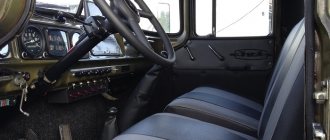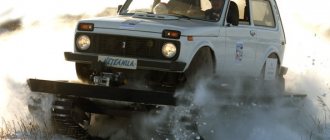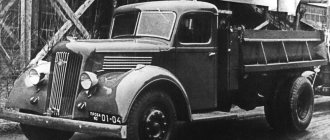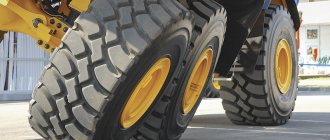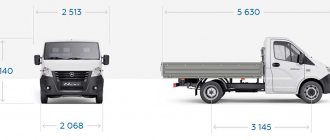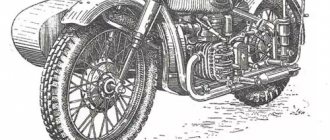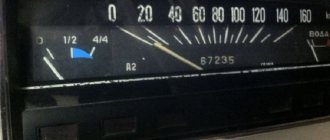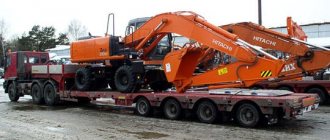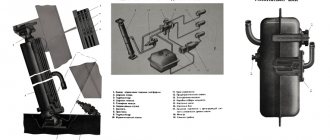Classifications of oil drilling rigs
There are several generally accepted classifications, each of which is based on a certain criterion.
Based on the type of structural system, drilling machines are:
- mast, in which the mechanical part is based on two supporting elements;
- tower, they have four support mechanisms. The load is distributed evenly on each element.
According to the method of movement, oil drilling rigs are:
- mobile ones are primarily used for reconnaissance work, in particular for taking soil samples;
- stationary ones are used for mining.
Depending on the location where the tower is installed, there are:
- ground mounted on the ground;
- marine ones are installed on the seabed.
Types of oil drilling rigs
Blade types of bits
Depending on the type of their design, as well as on the equipment with carbide elements, blade-type bits are used when drilling:
- soft rocks;
- rocks of medium hardness;
- soft rocks with low-abrasive middle layers;
- if necessary, drill out cement plugs or metal parts of the lower part of the casing pipe strings;
- if it is necessary to expand the wellbore.
Currently, the following types of blade bits are used in practice:
- two-bladed with flow-through flushing (diameter varies from 76 to 165.1 millimeters);
- three-blade with flow-through or hydromonitor type of washing (diameters - from 120.6 to 469.9 millimeters);
- three-blade bits with an abrasive-cutting principle of operation with flow-through washing or washing using a hydraulic monitor (diameter - from 190.5 to 269.9 millimeters);
- six-bladed abrasive-cutting bits with two types of flushing (diameter - from 76 to 269.9 millimeters);
- peaked with flow-through flushing (diameter - from 98.4 to 444.5 millimeters).
Currently, the industry produces the following types of bladed bits (not classified as peaked):
- bits for drilling soft rocks (letter M);
- for soft rocks with medium-hard layers (MS);
- for abrasive soft abrasive rocks with medium-hard interlayers (MSZ);
- for medium-hard rocks (C);
There are two types of pointed blade bits:
- used for expanding the wellbore (letter P);
- for drilling out metal elements and cement plugs in the lower part of the casing (C).
Read also: How to choose casing pipes for oil wells?
Areas of application and basic purpose
Oil drilling rigs are used to make multi-purpose holes.
They are used for:
- Drilling production wells. Such holes are used to extract oil, gas and related components.
- Formation of exploration holes. They are done where the presence of oil has already been confirmed by research. Wells are necessary in order to finally generate data on material reserves and prepare a scheme for working on the ground.
- Drilling appraisal wells. Their functional load is to analyze and predict the behavior of oil reservoirs and the possible movement of the earth's crust at the place of work, as well as estimate the volume of oil deposits.
- Making control wells. It is these holes that are necessary to constantly monitor the pressure in the area where mining is carried out.
- Drilling observation holes. Wells are used to establish the volumes of pumped and remaining oil, as well as to assess the contacts of oil, gas and water with each other.
Photo of an onshore oil drilling rig
DSP
Central collection points are universal technological facilities where extracted raw materials are separated into commercial oil, waste water and gas.
The wastewater is treated to a level that must meet established requirements and then introduced into the formation pressure maintenance system. Untreated wastewater is fed into special absorption wells for the purpose of disposal.
The CPS must provide:
- acceptance and preliminary separation of raw materials coming from the well cluster;
- acceptance and quantitative accounting of incoming products;
- oil preparation;
- preparation and, if necessary, safe disposal of waste and produced water (including storm water);
- acceptance and quantitative accounting of commercial oil received at the central processing plant;
- acceptance and preliminary preparation for transportation of associated gas;
- supply of prepared commercial petroleum raw materials to the main pipeline system.
To collect precipitation and spilled liquids, a special tank must be provided at the central station.
The sites on which technological equipment is located must be concrete-covered 15 centimeters above the ground. The slopes of such sites for drainage of rainwater must be no less than 0.003 degrees. If a spill of flammable products is possible at the central station, then its area should be fenced with concrete sides of at least 15 centimeters in height.
The areas on which furnaces and blocks for heating raw materials are located must be fenced either with an earthen rampart, or a solid wall, or a curb stone. The height of such a barrier in all cases should be at least half a meter.
The level of vibration and noise of the equipment used must be less than the maximum permissible sanitary standards.
Read also:
Composition of a drilling rig complex for drilling oil wells
If there is a need to use units with high noise levels, then the following must be provided:
- installation of noise suppressors;
- remote control system for such a unit;
- soundproofing in observation booths.
Recently, so-called CSPs (integrated collection points) or their modifications, called autonomous installations (AU), have been actively introduced. Such systems are especially typical for small deposits.
Any collection point must have a reserve fleet of tanks (including emergency tanks).
Device and equipment
The oil installation consists of the following systems:
- Energy complex. The diesel engine included in it processes fuel to produce the necessary energy. It powers an electric generator. This device supplies electricity to other components, assemblies and mechanisms.
- The mechanical system includes a lifting device. It moves heavy elements using a winch, cable reel and pulley.
- The auxiliary system includes propulsion elements, an auxiliary winch, ventilation equipment, lighting, water supply and heating.
- The information system provides control over the operation of the main components and assemblies.
- The circulation system is designed to ensure that the chemical solution enters the drill string. Under pressure it passes through the pipe system and the rotor table.
The mechanical system contains a drilling rig element in the form of a rotor barrel.
In addition to system units, the oil installation includes the following equipment:
- A pump that pumps drilling fluid into the string.
- Pipes provide connection between the units.
- The vibrating sieve is designed for filtering chemical mixtures.
- The derrick is the heart of the installation. It secures the drilling system.
- The preventer seals the pipe valves tightly.
- The swivel maintains the balance of the drill string.
- The kelly pipe is used to rotate the drill string.
- A drill string is a set of pipes for drilling wells.
- A drill is a rock-cutting element made from various materials.
Oil drilling rig diagram
How oil is extracted at sea: how an offshore oil platform is created and operates
\\ Home \ Technologies
Offshore oil production, along with the development of shale and hard-to-recover hydrocarbon reserves, will eventually displace the development of traditional “black gold” deposits on land due to the depletion of the latter. At the same time, the production of raw materials in offshore areas is carried out mainly using expensive and labor-intensive methods, which involve the use of the most complex technical complexes - oil platforms
Specifics of oil production at sea
The decline in reserves from traditional onshore oil fields has forced the industry's leading companies to focus on developing rich offshore blocks. Pronedra wrote earlier that the impetus for the development of this production segment was given in the seventies, after the OPEC countries imposed an oil embargo.
According to agreed estimates of experts, the estimated geological oil reserves located in the sedimentary layers of the seas and oceans reach 70% of the total world volumes and can amount to hundreds of billions of tons. Of this volume, about 60% falls on shelf areas.
To date, of the four hundred oil and gas basins in the world, half cover not only continents on land, but also extend on the shelf. Currently, about 350 deposits are being developed in different zones of the World Ocean. All of them are located within shelf areas, and production is carried out, as a rule, at a depth of up to 200 meters.
At the current stage of technology development, oil production in offshore areas is associated with high costs and technical difficulties, as well as a number of external unfavorable factors. Obstacles to effective work at sea are often high levels of seismicity, icebergs, ice fields, tsunamis, hurricanes and tornadoes, permafrost, strong currents and great depths.
The rapid development of offshore oil production is also hampered by the high cost of equipment and field development work. The amount of operating costs increases as the depth of extraction, the hardness and thickness of the rock increases, as well as the remoteness of the fishery from the coast and the complexity of the bottom topography between the extraction zone and the shore where the pipelines are laid. Serious costs are also associated with the implementation of measures to prevent oil leaks.
The cost of a drilling platform alone, designed to operate at depths of up to 45 meters, is $2 million. Equipment that is designed for depths of up to 320 meters can cost as much as $30 million. On average, the installation of an average production platform for production at great depths in the Gulf of Mexico costs at $113 million.
Loading of produced oil onto a tanker
Operation of a mobile type drilling platform at a depth of fifteen meters is estimated at $16 thousand per day, 40 meters - $21 thousand, a self-propelled platform when used at depths of 30-180 meters - at $1.5-7 million. The cost of developing fields at sea makes them profitable only in cases where large oil reserves are involved.
It should also be taken into account that the costs of oil production in different regions will be different. Work related to the discovery of a field in the Persian Gulf is estimated at $4 million, in the seas of Indonesia - $5 million, and in the North Sea prices rise to $11 million. The operator will also have to pay a lot for a license to develop an offshore field - he will have to pay twice as much as for permission to develop the land plot.
Types and structure of oil platforms
When extracting oil from the fields of the World Ocean, operating companies, as a rule, use special offshore platforms. The latter are engineering complexes with the help of which both drilling and direct extraction of hydrocarbons from under the seabed are carried out. The first oil platform to be used in coastal waters was launched in the US state of Louisiana in 1938. The world's first directly offshore platform called “Oil Rocks” was put into operation in 1949 in the Azerbaijani Caspian Sea.
Main types of platforms:
- stationary;
- loosely fixed;
- semi-submersible (exploration, drilling and production);
- jack-up drilling rigs;
- with stretched supports;
- floating oil storage tanks.
Floating drilling rig with outriggers "Arctic"
Different types of platforms can be found in both pure and combined forms. The choice of one or another type of platform is associated with specific tasks and conditions for field development. We will consider the use of different types of platforms in the process of applying basic offshore production technologies below.
Structurally, an oil platform consists of four elements - a hull, an anchor system, a deck and a drilling derrick. The hull is a triangular or quadrangular pontoon mounted on six columns. The structure is kept afloat due to the fact that the pontoon is filled with air. The deck houses drill pipes, cranes and a helipad. The tower itself lowers the drill to the seabed and raises it as needed.
1 - drilling rig; 2 — helipad; 3 - anchor system; 4 — body; 5 - deck
The complex is held in place by an anchor system that includes nine winches on the sides of the platform and steel cables. The weight of each anchor reaches 13 tons. Modern platforms are stabilized at a given point not only with the help of anchors and piles, but also with advanced technologies, including positioning systems. The platform can be moored in the same place for several years, regardless of weather conditions at sea.
The drill, whose operation is controlled by underwater robots, is assembled in sections. The length of one section, consisting of steel pipes, is 28 meters. Drills with quite wide capabilities are produced. For example, a drill on the EVA-4000 platform can include up to three hundred sections, which makes it possible to go 9.5 kilometers deep.
Oil platform drilling
The construction of drilling platforms is carried out by delivering the base of the structure to the production zone and flooding it. Already on the received “foundation” the remaining components are built on. The first oil platforms were created by welding lattice towers in the shape of a truncated pyramid from profiles and pipes, which were tightly nailed to the seabed with piles. Drilling equipment was installed on such structures.
Construction of the Troll oil platform
The need to develop fields in northern latitudes, where ice resistance of platforms is required, led engineers to a project for the construction of caisson foundations, which were actually artificial islands. The caisson is filled with ballast, usually sand. With its weight, the base is pressed to the bottom of the sea.
Stationary platform "Prirazlomnaya" with a caisson foundation
The gradual increase in the size of the platforms led to the need to revise their design, so developers from Kerr-McGee (USA) created a project for a floating object with the shape of a navigation pole. The design is a cylinder, in the lower part of which ballast is placed. The bottom of the cylinder is attached to the bottom anchors. This solution made it possible to build relatively reliable platforms of truly cyclopean dimensions, designed for work at extremely great depths.
Floating semi-submersible drilling rig "Polar Star"
However, it should be noted that there are no big differences in the actual procedures for extracting and loading oil between offshore and onshore drilling rigs. For example, the main components of a fixed platform offshore are identical to those of a drilling rig on land.
Offshore drilling rigs are characterized primarily by their autonomy. To achieve this quality, installations are equipped with powerful electric generators and water desalination units. Replenishment of platforms is carried out using service vessels. In addition, sea transport is also used to move structures to work points, in rescue and fire-fighting activities. Naturally, transportation of the obtained raw materials is carried out using pipelines, tankers or floating storage facilities.
Offshore technology
At the present stage of development of the industry, inclined wells are drilled at short distances from the production site to the coast. In this case, an advanced development is sometimes used - remote control of the processes of drilling a horizontal well, which ensures high precision control and allows you to issue commands to drilling equipment at a distance of several kilometers.
The depths at the sea shelf boundary are usually about two hundred meters, but sometimes reach half a kilometer. Depending on the depth and distance from the coast, different technologies are used when drilling and extracting oil. In shallow areas, fortified foundations, a kind of artificial islands, are built. They serve as the basis for installing drilling equipment. In some cases, operating companies surround the work area with dams, after which water is pumped out from the resulting pit.
If the distance to the shore is hundreds of kilometers, then in this case a decision is made to build an oil platform. Stationary platforms, the simplest in design, can only be used at depths of several tens of meters; shallow water makes it possible to secure the structure using concrete blocks or piles.
Stationary platform LSP-1
At depths of about 80 meters, floating platforms with supports are used. Companies in deeper areas (up to 200 meters), where securing the platform is problematic, use semi-submersible drilling rigs. Such complexes are kept in place using a positioning system consisting of underwater propulsion systems and anchors. If we are talking about ultra-great depths, then in this case drilling ships are used.
Drilling ship Maersk Valiant
Wells are constructed using both single and cluster methods. Recently, mobile drilling bases have begun to be used. Direct drilling at sea is carried out using risers - columns of large diameter pipes that descend to the bottom. After drilling is completed, a multi-ton blowout preventer (blowout prevention system) and wellhead fittings are installed at the bottom, which avoids oil leakage from the new well. Equipment to monitor the condition of the well is also launched. Oil is pumped to the surface after the start of production through flexible pipelines.
Application of different offshore production systems: 1 - inclined wells; 2 - stationary platforms; 3 - floating platforms with supports; 4 - semi-submersible platforms; 5 - drilling ships
The complexity and high-tech nature of the processes for developing offshore areas is obvious, even if you do not go into technical details. Is it advisable to develop this production segment, given the considerable associated difficulties? The answer is clear - yes. Despite the obstacles in the development of offshore blocks and the high costs compared to work on land, oil produced in the waters of the World Ocean is still in demand in conditions of continuous excess of demand over supply.
Let us remind you that Russia and Asian countries are planning to actively increase the capacities involved in offshore production. This position can safely be considered practical - as the reserves of “black gold” on land are depleted, work at sea will become one of the main ways to obtain oil raw materials. Even taking into account the technological problems, cost and labor intensity of offshore production, oil extracted in this way not only became competitive, but has long since firmly occupied its niche in the industry market.
/pronedra.ru/
